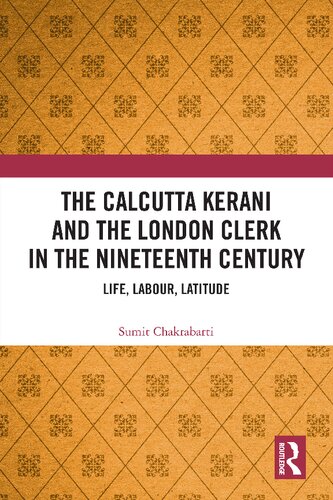

Most ebook files are in PDF format, so you can easily read them using various software such as Foxit Reader or directly on the Google Chrome browser.
Some ebook files are released by publishers in other formats such as .awz, .mobi, .epub, .fb2, etc. You may need to install specific software to read these formats on mobile/PC, such as Calibre.
Please read the tutorial at this link. https://ebooknice.com/page/post?id=faq
We offer FREE conversion to the popular formats you request; however, this may take some time. Therefore, right after payment, please email us, and we will try to provide the service as quickly as possible.
For some exceptional file formats or broken links (if any), please refrain from opening any disputes. Instead, email us first, and we will try to assist within a maximum of 6 hours.
EbookNice Team

Status:
Available4.5
29 reviewsThis book examines the location and representation of the colonial clerk or the kerani within the cultural and social space of nineteenth century colonial India. It provides a comparative history of the clerk in Calcutta vis-à-vis the clerk in contemporary London in order to understand the manifestations of modernity in these two disparate but intimately related spaces.
The volume traces the socio-historical life of the clerk in the newly emerged city-space of Calcutta and reveals how the Bengali kerani became a complex and distinct figure of bureaucratic and colonial modernity. It analyses the techniques of surveillance and ethical training given to the native clerks and offers insights into the role of education in the production and dissemination of knowledge and hegemony in the colonial setting. The author, through a reading of clerk manuals, handbooks and literary representations, highlights the class and cultural identity of the English educated colonial clerk in the new city-space. He also focuses on the ambivalence and unreliability of the clerk or colonial babu who became complicit and gave legitimacy to the empire while personifying a complex modernity within the networks of the colonial administration.
This book will be of great interest to students and researchers of colonial and imperial history, literature, cultural studies, city studies, British studies, area studies, commonwealth studies and South Asian studies, particularly those interested in colonial Bengal.